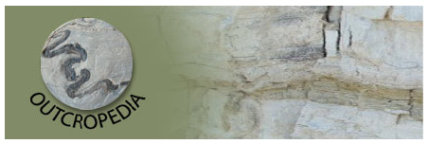Prefolding quartz veins (Rursee)
Beautiful Eschaulerberg cliffs showing an overturned secondary fold with late burial bedding-normal quartz veins and early tectonic bedding-parallel quartz veins continuously present across the anticlinal and synclinal fold hinge. Both vein-types are folded passively during Variscan contraction. Bedding-normal veins formed as a result of high fluid pressures during extension, while bedding-parallel veins reflect bedding-normal uplift and bedding-parallel thrusting at the onset of Variscan compression, prior to the main Variscan fold-and-cleavage development.
Outcrop only accessible by boat.
Beautiful Eschaulerberg cliffs showing an overturned secondary fold with late burial bedding-normal quartz veins and early tectonic bedding-parallel quartz veins continuously present across the anticlinal and synclinal fold hinge. Both vein-types are folded passively during Variscan contraction. Bedding-normal veins formed as a result of high fluid pressures during extension, while bedding-parallel veins reflect bedding-normal uplift and bedding-parallel thrusting at the onset of Variscan compression, prior to the main Variscan fold-and-cleavage development.
Outcrop only accessible by boat.
Photograph: Koen Van Noten
Reference: Van Noten, K., Muchez, Ph. & Sintubin, M. (in press). Stress-state evolution of the brittle upper crust during compressional tectonic inversion as defined by successive quartz vein-types (High-Ardenne slate belt, Germany). Journal of the Geological Society, London 168, (2011) DOI: 10.1144/0016-76492010-112.
